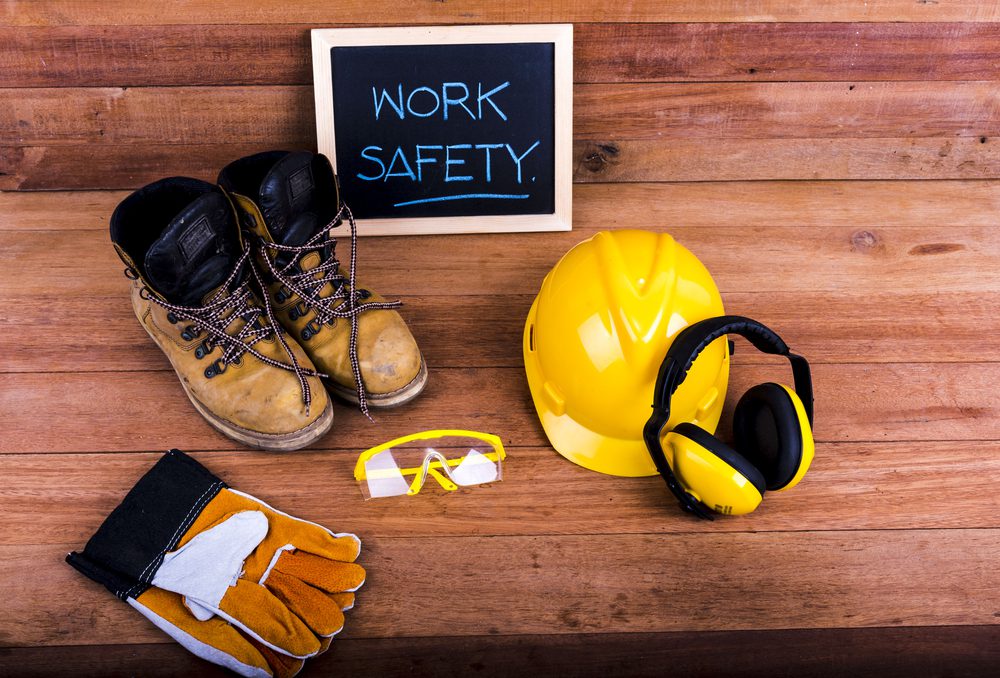Roofers have to take special care while on the job to avoid personal injury and damage to a client’s buildings. This is why it’s so important to develop, implement, and maintain effective safety measures while a roof is being worked on. Roofs by themselves are dangerous, simply because of how high they often are, their slope, and the uncertainty of your footing. Gravel rooftops can be uneven and provide unsteady footing, and so professional roofers have learned to exercise great caution when attempting repairs or inspections, especially on commercial roofs.
Some of the most common dangers to roofers include:
- Extreme heat: Not only are roofers working under the sun for hours at a time, but they’re surrounded by reflected heat. Working in these conditions puts workers at risk of dehydration or heatstroke if they’re not mindful of just how hot it becomes while working.
- Slippery conditions: Walking on roofs can be hazardous when ice, snow, rain and moisture is present, or if there is an uncommonly steep sloped roof or a flat roof with gravel. Footing and correct footwear is of paramount importance to accessing the roof safely and any of those conditions can compromise that safety.
- Ladders: An improperly secured ladder can lead to a serious fall or even death. For buildings that don’t provide roof access from inside, roofers must use ladders to get to the roof.
- Vents & ductwork: Exposed vents, ductwork, and other obstructions protruding from the roof can all block a worker’s view or become hazardous obstacles simply by being in the way.
- Trees, wires, and loose debris: It’s not uncommon for electrical wires to extend across roofs or for tree branches to partially obscure view. These hazards can cause roofers to trip or fall, and in the case of overhead power lines and HVAC equipment, sustain serious injuries.
How do roofers stay safe?
Roofers are safest when they’re properly trained in how to use their tools and equipment. This not only makes them safer, but also more efficient. Roofers have access to a wide range of tools that vary depending on the job, which can include everything from hammers and tin snips to nail guns and circular saws. Learning how to master these tools will best teach roofers how to do so safely and in a number of different environments and weather conditions.
There are also national safety standards in place to help educate and protect workers while on the job. These standards, such as those outlined by the National Roofing Contractors Association (NRCA) and OSHA, outline rules and regulations roofers should apply to their conduct and actions.
Besides understanding how to handle the equipment and navigate working on sloped or uneven surfaces, safety comes down to the practices roofers and companies implement. For example, Heidler Roofing holds what we like to call a Safety Huddle. We’ll start off at a fast pace in the morning, and the huddle is designed to stop any rushing or frustration before we get to the roof. The purpose of the huddle is to reset the focus and bring safety back to the front of our minds to keep us alert and aware.
5 ways to ensure roofer safety
- Ensuring their work area is organized and clean. Tools and equipment should be blocked off from animals, children, and pedestrians as to avoid unnecessary injury or damage. Work areas should also be separated from common danger areas.
- Wearing appropriate footwear with adequate traction, safety glasses, hardhats, and gloves when appropriate. Always wearing a safety harness and ensure it’s tied off securely.
- When using ladders, always secure them with stabilizers or through other means. This not only keeps the ladder steady but also prevents damage to a building’s gutter system.
- Cleaning up as you work to avoid creating debris and other hazards that may lead to falls or injury.
- Not working during inclement weather or extreme heatwaves. Rain and snow cause their share of hazards for roofers, but so can very high temperatures. Try to plan your jobs around the weather and have contingency plans in place to avoid losing too much time if you have to wait out particularly bad weather.
When hiring a roofer, make sure to ask if they have insurance and if they offer workman’s comp insurance to their employees. You can also inquire as to what safety standards they’ll follow while working on your building’s roof. Asking the right questions before you hire a contractor is the best way to find safety-conscious roofers you can trust to get the job done safely.


